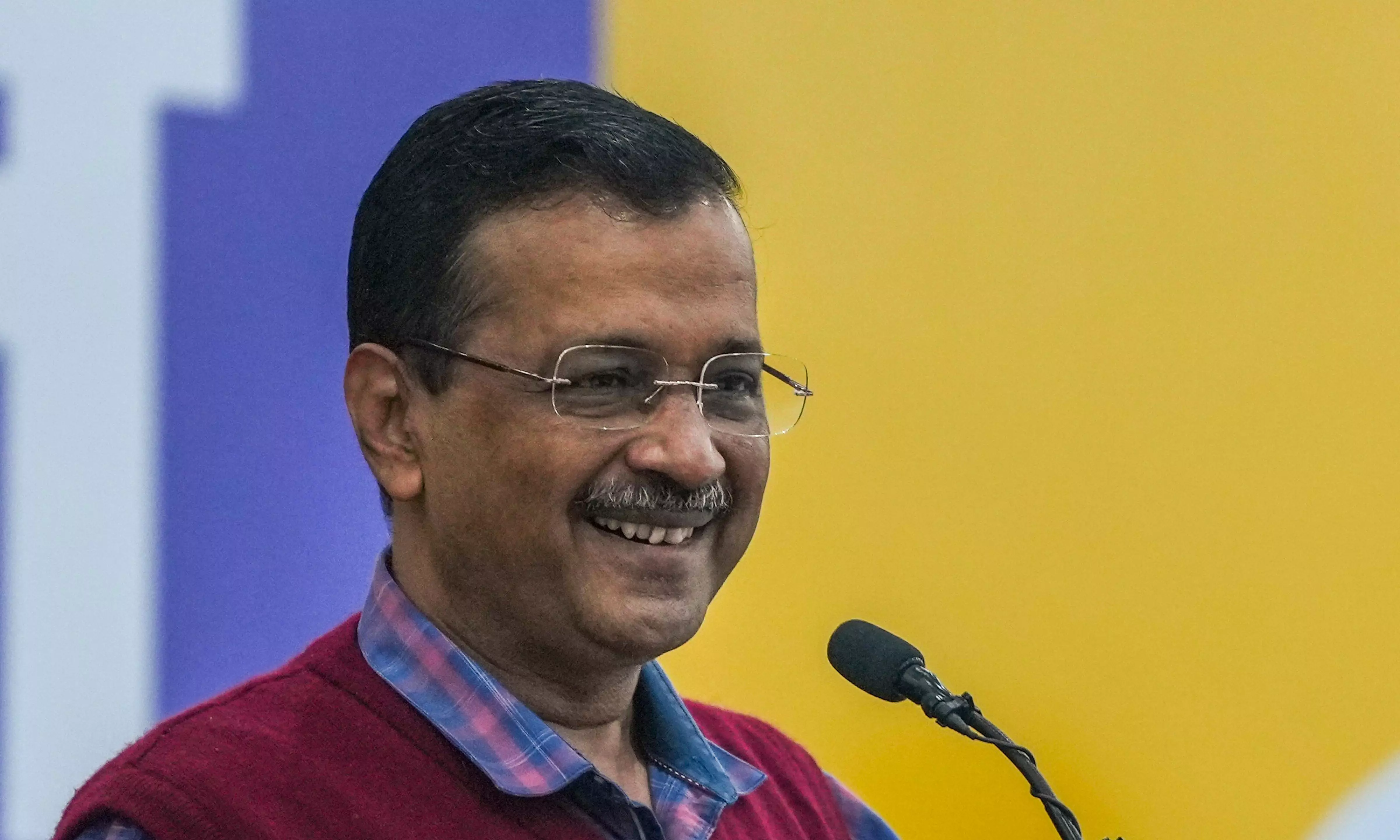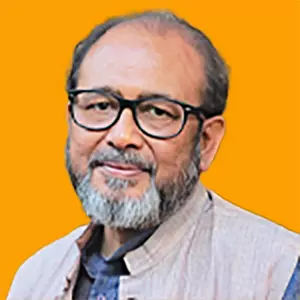
- Home
- India
- World
- Premium
- THE FEDERAL SPECIAL
- Analysis
- States
- Perspective
- Videos
- Sports
- Education
- Entertainment
- Elections
- Features
- Health
- Business
- Series
- In memoriam: Sheikh Mujibur Rahman
- Bishnoi's Men
- NEET TANGLE
- Economy Series
- Earth Day
- Kashmir’s Frozen Turbulence
- India@75
- The legend of Ramjanmabhoomi
- Liberalisation@30
- How to tame a dragon
- Celebrating biodiversity
- Farm Matters
- 50 days of solitude
- Bringing Migrants Home
- Budget 2020
- Jharkhand Votes
- The Federal Investigates
- The Federal Impact
- Vanishing Sand
- Gandhi @ 150
- Andhra Today
- Field report
- Operation Gulmarg
- Pandemic @1 Mn in India
- The Federal Year-End
- The Zero Year
- Science
- Brand studio
- Newsletter
- Elections 2024
- Events
- Home
- IndiaIndia
- World
- Analysis
- StatesStates
- PerspectivePerspective
- VideosVideos
- Sports
- Education
- Entertainment
- ElectionsElections
- Features
- Health
- BusinessBusiness
- Premium
- Loading...
Premium - Events

Neither BJP nor the now way-down-the-shelf Congress has an identified chief ministerial face
Political leaders, especially legislators or parliamentarians, defect to another party on poll eve for two primary reasons: One, she/he gets an indication that the parent party will deny nomination to contest the impending elections; two, while nomination is certain, chances of winning are bleak because of decline in support for the parent party and its leader’s popularity.
In recent years, a new cause has been added: the BJP increasingly uses central investigating agencies to browbeat political leaders of significance in other parties in attempt to force them to defect to it; ‘join us to get the investigations against you quashed’, the message goes.
Such instances have occurred either before state or parliamentary elections, or even during intra-poll periods.
Also read | Kashmir poll win was momentous; can Congress fully grasp its import?
Reasons for Gahlot’s exit
It is very difficult to specify at this stage before the state Assembly elections, due in January-February 2025, why Kailash Gahlot, former Delhi cabinet minister in charge of several portfolios including transport, home and IT and senior AAP leader, quit the party andpromptly joined the BJP.
But trouble was brewing for several months. The first time this came to the fore was when the party leadership (read Arvind Kejriwal) in August 2024 chose then state education minister Atishi over the more senior Gahlot to hoist the national flag at the Delhi government’s 78th Independence Day ceremony at the Chhatrasal Stadium.
Indian flag and Gahlot
However, the honours were eventually done by Gahlot because Delhi Lt Governor, VK Saxena, nominated him to hoist the national flag. The decision was seen as one which had the potential to set off another round of confrontation between the AAP brass and the LG Secretariat. But party leaders were smart and deflected the issue by stating that the decision ‘honoured’ the principle of democracy.
In reciprocation, Gahlot took up cudgels on behalf of the AAP despite being seen with Saxena during several functions in the weeks prior to the Independence Day. In his address after hoisting the tricolor, Gahlot wondered the “true meaning of independence” when a “modern-day freedom fighter” like chief minister Kejriwal was in jail “without evidence”.
Gahlot versus Atishi
The decision of the AAP to allow Saxena his way and permit Gahlot to go ahead with the function was a tactical move. However, a month later, in September, after Kejriwal was released on bail, he decided to step down from the office of chief minister and nominated Atishi to the position.
The message was clear: he considered her to be a bigger loyalist than Gahlot.
In most instances, electoral fortunes of parties are dependent on a combination of the party supremo’s popularity and the local candidate’s social profile and standing with the voters in the constituency.
Also read | Congress’s health is important to national polity, so party must regain its mojoThe Kejriwal factor
From the 2013 state Assembly elections onwards, when the AAP emerged for the first time and formed the government for an action-packed tenure of 49 days, it has been dependent on Kejriwal as the X-factor.
But in its electoral debut, when the party won 28 seats and formed the government with support from the Congress, the party did not win the Najafgarh seat on the south-western fringes of Delhi. Instead, the seat was won by the BJP which wrested it from the sitting MLA who had previously won as an Independent but in 2013 contested as a nominee of the Indian National Lok Dal. Gahlot, who joined the party in 2014, was successfully fielded in 2015 – the polls in which the AAP won 67 out of the 70 seats in the Assembly.
Gahlot was re-elected in 2020 by more than doubling the victory margin even though the AAP’s tally declined slightly to 62 seats. This indicated that Gahlot had held his own despite a small dip in the party’s fortunes.
Others lack CM face
In this context, his departure from the AAP can damage the party’s prospects in seats which have a quasi-rural character or are semi-urban seats, like Najafgarh.
Although the AAP’s campaign still revolves around Kejriwal, it has succeeded because neither the BJP, nor the now way-down-the-shelf Congress, has an identified chief ministerial face. However, to neutralise the departure of Gahlot, the party has inducted another Jat leader as his replacement.
Raghuvinder Shokeen, the chosen legislator, a Jat like Gahlot, had won the seat for the first time in 2015 and retained it in 2020, albeit with a slightly lower margin. His choice for the ministry underscores the AAP’s assessment that in the rural pockets of Delhi, the social identity of candidates can play a role in elections even while Kejriwal remains the main driver of the party’s fortunes.
Also read | Close to 75, Modi in no hurry to quit, eager to secure place in history
Issues that don’t resonate
The damage to the AAP’s prospects would have been more significant if Gahlot offered more important reasons for quitting the party and government than listing the renovation of the chief ministerial house by Kejriwal at allegedly exorbitant cost and the ‘cleaning’ of river Yamuna being a virtual non-starter.
Neither of the two issues surfaced on poll-eve making it amply clear that being overlooked over Atishi is the primary reason for Gahlot parting ways with the AAP. Furthermore, the AAP has claimed that Gahlot’s moved was aimed to escape the dragnet of investigative agencies.
Although the AAP started as an issue-based political movement, it has over the past decade come to revolve around one individual, a template that is followed by most parties, from the Congress to almost every regional party.
Individual-centric parties
Even the BJP which was once noted for its collegial style of functioning has become completely Narendra Modi-centric after 2013. Regional family-centred parties which split have also become centred on one individual –Ajit Pawar, for instance. In the impending Delhi elections, the biggest factors will centre around Kejriwal; does the electorate believe that he indulged in corrupt practices in the so-called Delhi liquor ‘scam’ and if the people reject his brand of personality-oriented politics.
The other issue which is likely to play a major role is the constant tussle between the chief minister/party and the Lt Governor’s office as representative of the Centre. This issue, the extent of the elected government’s powers, has gone repeatedly all the way to the Supreme Court and has the potential to benefit the AAP with its demand for greater powers by amending the National Capital Territory of Delhi (GNCTD) Act, 1991.
Delhi’s powers stripped
When this Act was amended in 2023, for the first time, the Central Government invoked its powers under Article 239 AA(7) to bring certain services out of the domain of the Delhi Legislative Assembly.
The amended law takes out “Services” from the purview of the Delhi Assembly. This virtually broke the triple chain of accountability linking the civil services, ministers, the legislature and citizens. In many ways, this violates the principle of parliamentary democracy, which is a part of the basic-structure doctrine.
Pandering to Jats
The Delhi government challenged the Act, immediately after it was first promulgated as an Ordinance, pleaded for early hearing in the Supreme Court in July. It remains to be seen if the new Chief Justice of India will expeditiously reconstitute the Bench (former CJI DY Chandrachud headed the five-judge Constitution Bench).
It is likely that Kejriwal may introduce a State versus Centre issue in the party’s electoral campaign. If this gains currency with the people, it would minimise the role of individual leaders like Gahlot. But the decision to induct another Jat leader into the government indicates that the party and its supremo are not taking chances by antagonizing any particular community.
(The Federal seeks to present views and opinions from all sides of the spectrum. The information, ideas or opinions in the articles are of the author and do not necessarily reflect the views of The Federal.)


